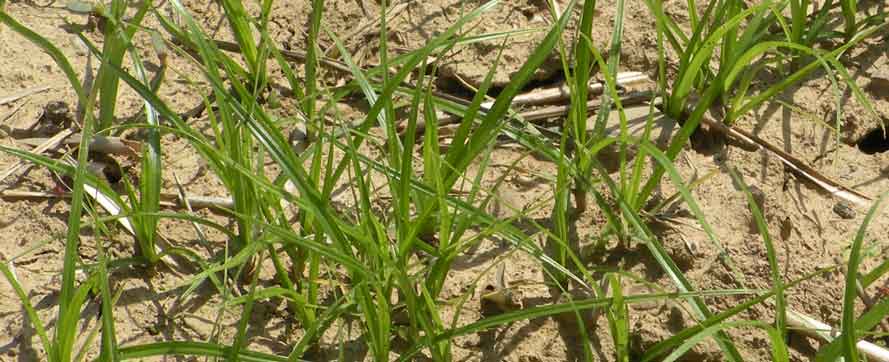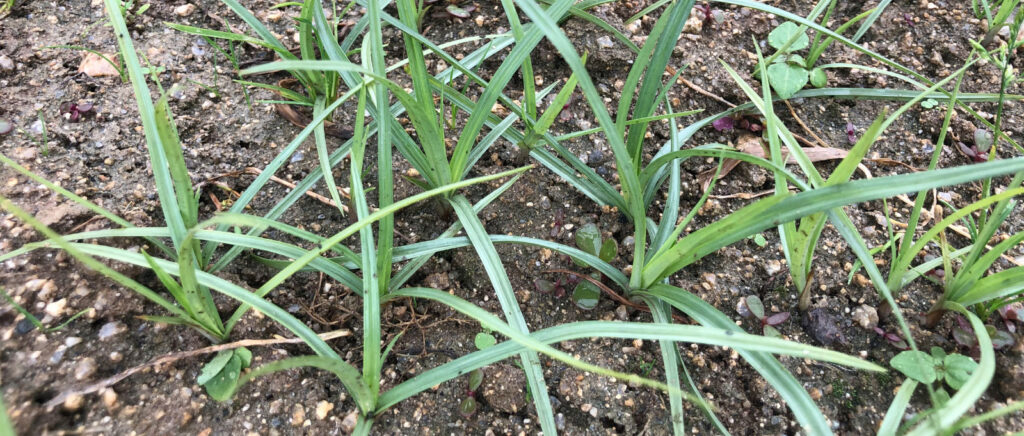The use of the Sedge since ancient times.
Loved by some. Hated by others. Certainly, the sedge is a fierce and often unmanageable plant for farmers, but it has been highly valued by diverse cultures and civilizations for over 5,000 years, as we will study in this agricultural section.
The use of the sedge for medicinal purposes dates back to ancient times. Let’s analyze the approximate timeline, starting around 3000 BC in Ancient Egypt, when it was frequently used to treat digestive and parasitic ailments, applied as poultices to wounds and inflammations, and was an essential ingredient in perfume and ointment mixtures for its sweet, woody aroma. Remains of sedge rhizomes have been found in pharaonic tombs, suggesting that it was also used for ritual purposes.
- Around 2,500 BC, Traditional Chinese Medicine used Sedge (Xiang Fu, 香附) to regulate Qi or vital energy, particularly for abnormal cases of the liver and spleen, as well as in treatments to relieve menstrual pain, hormonal imbalances, and incorporated into tonics to relieve abdominal distension, gas and colic.
- Today, sedge remains a highly valued ingredient as an essential component of Chinese herbal medicine, combined with ginger and Chinese angelica (Angelica sinensis or Dong Quai (当归), or “return home”, as it helps restore the body’s balance).
- For millennia, the root of this plant, Angelica sinensis, has been used as a regulator of the hormonal, circulatory, and digestive systems, and is highly valued for women’s health, in addition to improving arthritis and migraines and regulating stress levels.
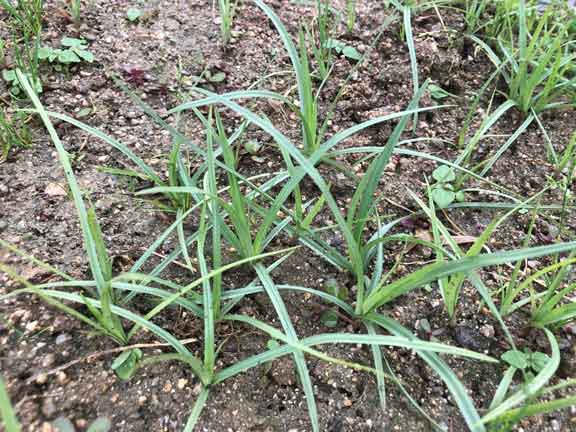
Let’s return to the ancestral use of the Sedge.
- Around 1,500 BC, in Indian Ayurvedic Medicine, the Sedge is known as Musta or Nagarmotha, and traces of its use appear in ancient texts such as the Atharvaveda (1500 BC) and the Charaka Samhita (approx. 500 BC).
- In this tradition, the Sedge is used to balance the three doshas or bioenergetic forces that govern our body and mind, and it is stated here that when one of these doshas becomes deficient or excessive, it is when diseases and ailments, both physical and emotional, manifest.
- It was used as a digestive and detoxifying tonic, as a natural anti-inflammatory and analgesic, and as a strengthener of the immune system.
- Between 500 BC and 200 AD, Greek and Roman medicine had already assimilated Egyptian and Indian traditions and with them, the use of sedge as a basic ingredient for various treatments such as analgesics for muscle and menstrual pain, to alleviate headaches and stomach problems, to alleviate gas and indigestion, and also prepared in ointments and perfumes.
The Sedge today: A thin red line.
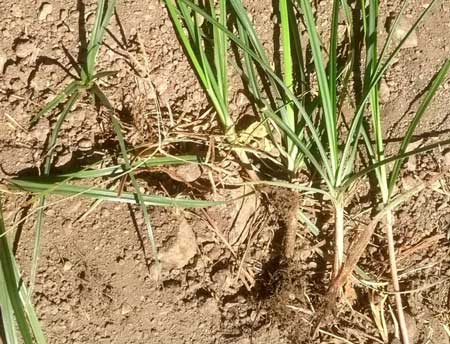
- Today, we can consider the sedge a thin red line. We already know that its medicinal use is part of a tradition preserved by various cultures to this day, yet in the agricultural world, it represents a daily inconvenience for growers of both large and medium-sized cultivated areas.
- It is known as Coquito, Castañuela, Juncia Real, Corocillo, Nutgras (herb with nut-shaped fruits), Purple nutsedge (Morada Sedge), Coco-grass (coconut grass), Musta and Nagarmotha as we already analyzed in Ayurvedic Medicine, Souchet Rond in France, Zigolo Infestante in Italy, Erdmandelgras (Tiger nut grass) in Germany.
- Now, this plant belongs to the Cyperaceae family (sedges), also known as Cyperus (rush) rotundus (underground tubers), and one of its main characteristics is its rapid spread, its high level of resistance to adverse climatic conditions and its invasive and competitive capacity with crops and ecosystems in which, when it appears, it expands rapidly.
- Its dark, fibrous underground rhizomes produce small, dark-brown tubers that serve as nutrient reservoirs and can germinate over the years without any signs of deterioration. These rhizomes allow for fruitful vegetative reproduction, so eradicating sedge from our crops is a difficult but not impossible task. We’ll see why later.
- This is a perennial plant, meaning it can flower and produce seeds continuously and indefinitely, and by now the sedge has developed highly specialized survival mechanisms. Furthermore, its deep, highly evolved roots allow it to exploit soil resources more easily.
- The sedge flowers at the top of the stem in small, purple-brown spikes with three stamens, and its fruits are small, elongated nuts. Although it produces seeds, its reproduction is vegetative, through rhizomes and tubers.
Geographic Distribution and Propagation Means of the Sedge.
- Currently, our fierce plant, the sedge, predominates in agricultural areas, along roadsides, in vacant lots, in wetlands, and perfectly tolerates extreme droughts, saline soils, and mild frosts.
- It prefers sandy, clayey, and moist soils and regenerates itself afterward in lands subjected to fires and deep tillage. It has also been shown to be resistant to some chemical herbicides.
- The sedge has spread throughout the planet except Antarctica.
- In Asia it spreads through India, China, Japan, Indonesia and the Philippines.
- In the American continent it extends from the United States of America, passing through Mexico, Brazil, Argentina and Colombia.
- In Europe it spreads through Spain, Italy, France and Greece, and in Oceania it spreads throughout Australia, New Zealand and the Pacific Islands.
Let’s analyze its propagation system a little:
- The Achilles’ heel of the sedge is its root system. Its rhizomes and underground tubers are the reproductive plants, as a single rhizome generates hundreds of new shoots, and if we cut them or if they are fragmented after tilling or clearing, they will reappear with the same reproductive qualities, resistance, and speed.
- While it is true that seed propagation is not as effective, it will also work, as will successful seed dispersal by wind, water, livestock, or accidental transport on farm machinery.
- Contaminated, untreated, and unrotated soils for new crops are highly likely to retain rhizomes and tubers, so thorough and meticulous tillage is necessary before preparing the land for our next agricultural projects.
Below we share this useful link that may help us expand our information:
Malas hierbas más importantes en España. Herbicidas
Here is another interesting link to take into account:
https://www.ne-val.com/fertilizantes
Impact of Sedge on agricultural activity.
- So far, we have analyzed the ancestral history and benefits of the sedge in its medicinal use, which is still relevant in Ayurvedic medicine, traditional Chinese medicine, and herbal medicine.
- We also consider the ecological importance of this plant, as it retains degraded or fragmented soil, preventing erosion. Its underground roots improve nutrient mobilization. Its rhizomes capture carbon, which helps regenerate soils lacking suitable conditions for planting. It also acts as a food reservoir for insects, birds, and small mammals.
- Another advantage of sedge is that it serves as an ecological stabilizer and, in aquatic areas, acts as a pollutant filter.
Now, let’s study the other side of this thin red line that brings us to our agricultural space today: “the dark side of the Sedge.”
This is one of the most invasive and aggressive plants on our planet, and its structure makes it a titanic competitor for nutrients, water, and living space, threatening and significantly impairing the growth and development of any crop we may have in mind. It’s very important to take this reality into consideration, as it can cause substantial economic losses.
Let’s list the damages that can occur if we don’t take the appropriate controls and precautions:
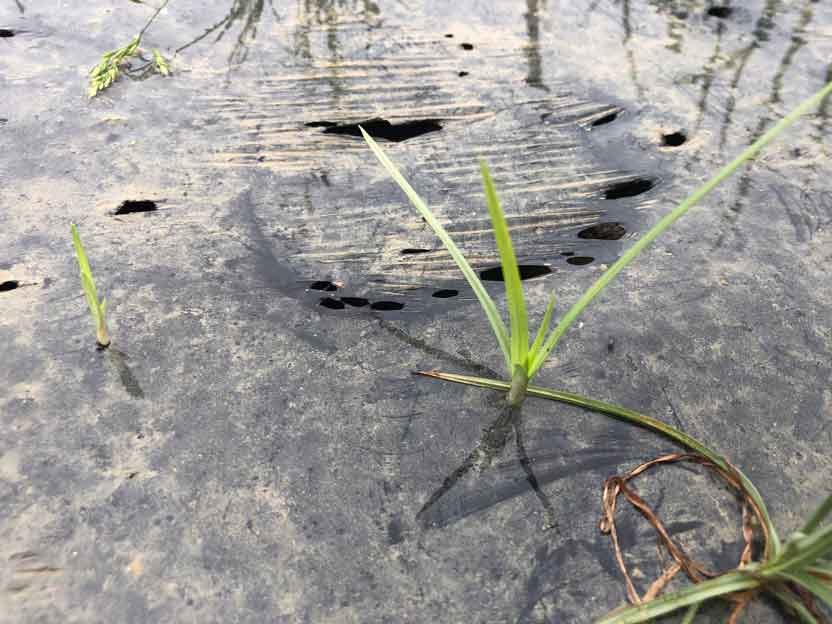
- Sedge damages agricultural production because it rapidly competes for essential nutrients from main crops. It hinders germination and seedling growth from the roots, due to the structure of its rhizomes, which absorb nitrogen, phosphorus, and potassium.
- Sedge depletes soil moisture, causing water stress in most cases, especially in hot, dry climates.
- It forms compact colonies and therefore hinders the action of agricultural and harvesting machinery.
- Sedge disrupts the soil’s natural habitat by releasing toxins (allelopathic substances) that inhibit the growth of beneficial microorganisms that regulate and stabilize agricultural ecosystems.
- These microorganisms, one of the sedge’s favorite foods, are responsible for providing the substrate’s vital essence; they bind essential nutrients, produce natural antibiotics that protect crops from disease, improve water and nutrient absorption, act as biological pest controllers, and promote the formation of humus, which increases soil fertility. They contribute to the decomposition of organic matter, which our crops need for proper development. They assist the plant’s root system in greater absorption of water and minerals, especially if necessary during dry seasons.
Let’s look at this damage description in detail:
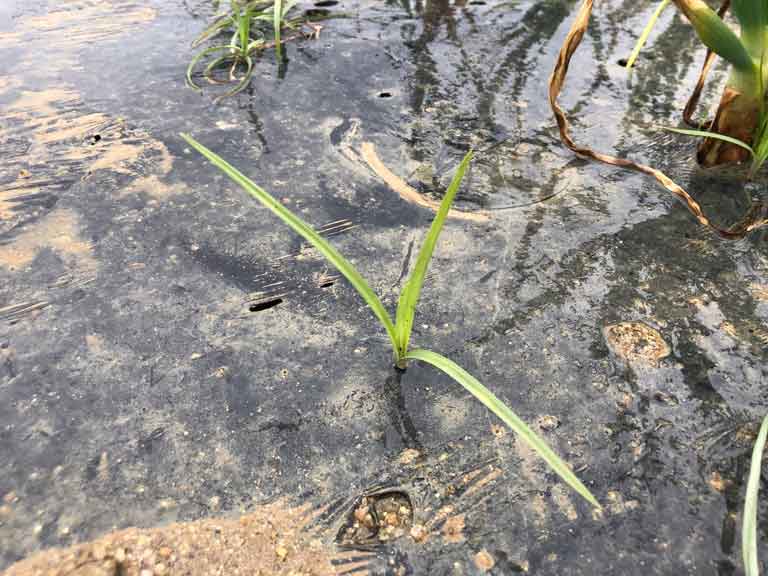
- Cereal and Grain Crops: Rice, corn, wheat, barley, sorghum. Sedge competes for water and light, inhibiting germination and vegetative growth. In the case of rice, our ferocious plant hinders the photosynthesis process because it grows faster and exceeds the height of the seed. Its ability to survive in flooded fields is very efficient, so eliminating it in these strata is a colossal task.
- Vegetable and Grain Crops: The dark side of the sedge will rob us of up to 60% of the water we need, and we will see our production and profitability significantly reduced.
- Vegetable and legume crops: Tomatoes, carrots, onions, lettuce, beans, and lentils, all with superficial root systems, are constantly threatened, so the sure emergence of our fierce plant, the sedge, will also compete for water and light.
- Fruit Crops and Vineyards: Orange, lemon, grape, olive, and apple trees. Competition is concentrated on the tree roots, and pest control and substrate maintenance will be a huge and costly undertaking. Needless to say, the quality of the fruit production will be diminished, as will our wallets.
- Industrial Crops and Plantations: Sugarcane, cotton, coffee, cocoa. Here, the ferocious sedge will continue to wreak havoc; in sugarcane plantations, it can reduce production by up to 50%. In cotton fields, it resists herbicides very well and is difficult to eliminate, but we are already aware of the damage these products cause to any of our agricultural projects. In cocoa and coffee plantations, the ferocious sedge ravages young plants, resulting in poor and defective production.
Biodegradable paper mulch: The ecological, sustainable, and effective solution for controlling sedge damage.
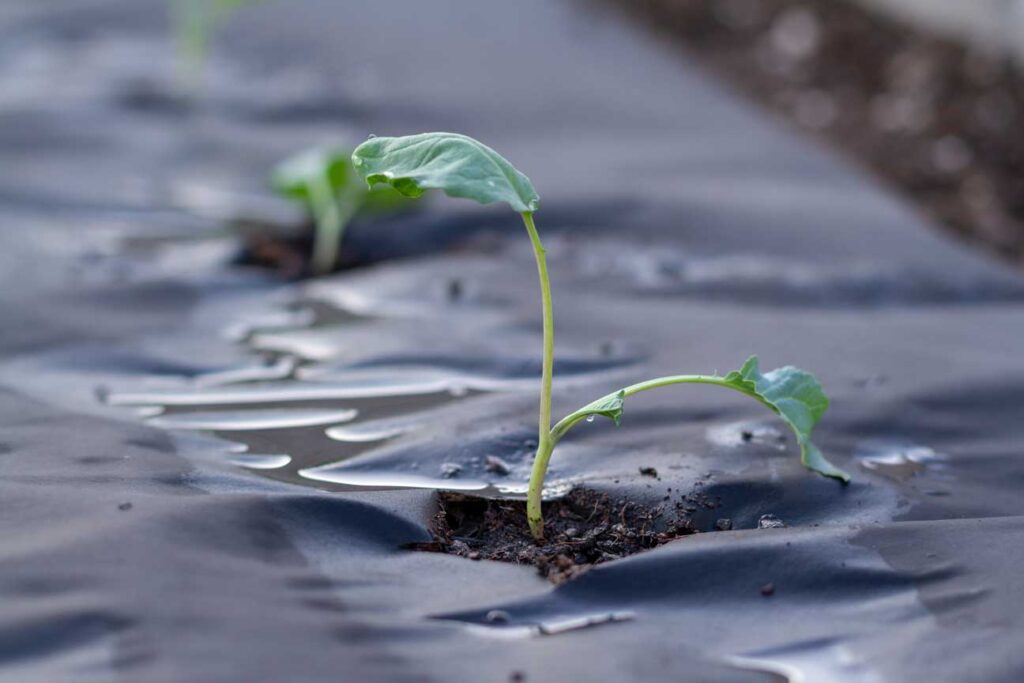
Let’s now review the effects of using this unsurpassed technique, which is respectful of our agricultural activity and our planet: biodegradable paper mulching.
- The specialized structure that makes up this innovative solution stops and suppresses the emergence and life process of the sedge from its germination and activates reproduction through its underground rhizome system.
- When we install paper mulch by spreading it over our substrate, it will block the passage of sunlight from the surface to the root zone of the sedge and any remaining weeds in the soil, and even any pests or diseases that may have lain dormant, waiting to spread to the new crops.
- The life of the sedge depends on a good dose of sunlight and the large amounts of water it consumes, which generates competition that generally results in serious deterioration and very scarce and poor production of any planting we have started.
- Paper mulch greatly benefits us because it encourages soil transpiration, providing the correct amount of moisture retention without allowing excess. This means we will irrigate only what is necessary. The lower the volume of water and light, the lower the survival capacity of the sedge’s rhizomes and underground tubers. In addition, we will reduce costs and contribute to the ecosystem and sustainability.
- Another essential benefit of using paper agricultural mulch is that it is specially made with biodegradable materials such as paper, and this is one of the most effective techniques for conserving nutrients in both the soil and our crops. Due to its composition, it degrades without leaving unnecessary plastic and toxic waste, thus becoming a nutritious and complete fertilizer enriched with organic matter, very important for our future agricultural projects.
- Once the planting cycle is over, it does not need to be collected, as it is biodegradable, meaning substantial savings for large crops.
- Having two usable sides (the black side and the white side) allows for year-round cultivation in geographical areas where winters are mild. This allows us to place the black side facing upward during periods of high temperatures and the white side facing upward during periods of low temperatures, refracting or absorbing energy and temperature as appropriate for the crop.
- Furthermore, it prevents and reduces erosion, as it protects the soil surface from the direct and unpredictable impact of excessive rainfall, wind, and frost, which can cause temperatures that could damage our crops and the usable nature of the land.
- Additionally, since this biodegradable paper material inhibits the emergence and proliferation of not only sedges but also other weeds, it allows for the balance of the ecosystem’s biodiversity, that is, it favors the growth and development of soil microbiota, which are the beneficial bacteria and fungi that improve the fertility of the substrate and, consequently, of all our agricultural projects.
- This means significant savings in water and associated economic costs, as it efficiently conserves crop moisture.
Biodegradable paper mulch and traditional methods to control the effects of sedge.
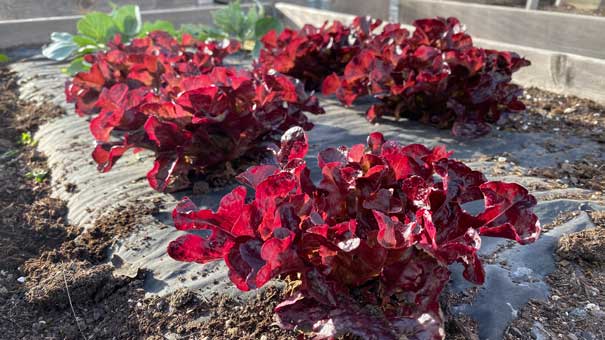
Let’s study. At this point in our analysis, we must compare the implementation of biodegradable paper mulch, which we have already examined in this agricultural area, with the various intervention and control techniques for these invasive herbicides, including the ferocious sedge.
Plastic padding:
- It has been verified that it is not effective in inhibiting or controlling the appearance and proliferation of sedge, and furthermore, its properties are not biodegradable, so it is not a material that helps enrich the natural composition of the soil and does not favor the biodiversity of the ecosystem. It is a material prone to producing eventual toxicity in both the substrate and the crop, and when removed, it usually leaves behind harmful plastic waste for our future projects and for the natural sustainability of the soil.
- Its functional life is relatively short because the sedge pierces the plastic material and will spread throughout the entire underground root zone of our planting.
- The average cost of plastic mulch is not a viable solution for the entire growing process from start to harvest, since it requires periodic replacement of the material. As mentioned above, it will leave contaminating residues that must be cleaned when preparing the soil for future agricultural projects, which will increase our initial budget.
Chemical herbicides:
- Sedge is resistant to these products, which means its effectiveness can be considered relatively low. It also harms and contaminates the purity and health of our crops and alters the biodiversity of the ecosystem, which is essential for the optimal, productive, and profitable development of our projects.
- Chemical herbicides require periodic and unprofitable irrigation, which drains our budget.
Manual or mechanical control:
- Manual or mechanical tillage and weeding represent high and continuous labor costs, and do not guarantee effective eradication of the sedge.
- The use of both can cause significant soil erosion and a harmful imbalance in the entire microbiota, which is essential for the life of our crops.
How to install biodegradable paper mulch to prevent the growth of sedge.
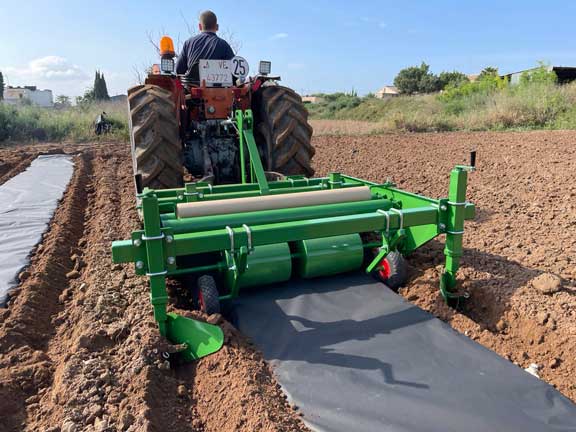
- Once we have completed the crop rotation, we begin to prepare the new soil, carefully removing the visible and most developed sedge, as well as all residues foreign to the natural composition of the soil we have available, which could eventually contaminate or hinder the process of our sowing: large or medium-sized stones and remains of previous crops in which remnants of pests, diseases or other toxic agents may remain.
- We spread biodegradable paper sheets over the previously planted area, especially over those areas that are less suitable for planting, as the mulch will begin its process of nourishing and readjusting the soil’s structure and fertility.
- We’ll secure the paper with dirt, rocks, or staples to hold it in place and prevent it from lifting or detaching due to the effects of the wind.
- On the paper, we will make small holes into which we will introduce our plants, considering the distances required for each species to begin its correct and comfortable growth.
- The paper mulch biodegrades, becoming a rich source of nutrients and organic matter that will serve as an essential base for our future projects, and the ferocious sedge will be unable to survive.
-
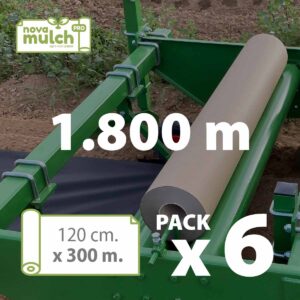 PACK of 6 rolls of Novamulch Professional paper 120 cm. x 300 m. (1.800 m)565,28 € IVA incluido
PACK of 6 rolls of Novamulch Professional paper 120 cm. x 300 m. (1.800 m)565,28 € IVA incluido -
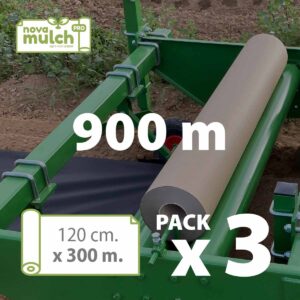 PACK of 3 rolls of Novamulch Professional paper 120 cm. x 300 m. (900 m)282,22 € IVA incluido
PACK of 3 rolls of Novamulch Professional paper 120 cm. x 300 m. (900 m)282,22 € IVA incluido -
 PACK of 6 rolls of Novamulch Professional paper 60 cm. x 300 m. (1.800 m)282,22 € IVA incluido
PACK of 6 rolls of Novamulch Professional paper 60 cm. x 300 m. (1.800 m)282,22 € IVA incluido -
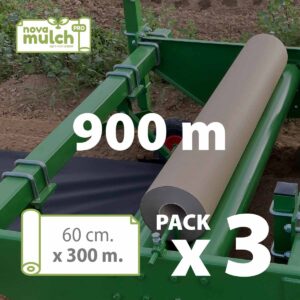 PACK of 3 rolls of Novamulch Professional paper 60 cm. x 300 m. (900 m)141,30 € IVA incluido
PACK of 3 rolls of Novamulch Professional paper 60 cm. x 300 m. (900 m)141,30 € IVA incluido -
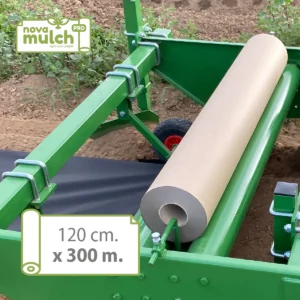 Novamulch Professional Paper 120 cm. x 300 m.94,21 € IVA incluido
Novamulch Professional Paper 120 cm. x 300 m.94,21 € IVA incluido -
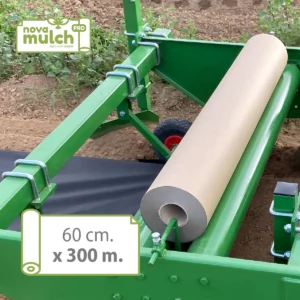 Novamulch Professional Paper 60 cm. x 300 m.47,10 € IVA incluido
Novamulch Professional Paper 60 cm. x 300 m.47,10 € IVA incluido -
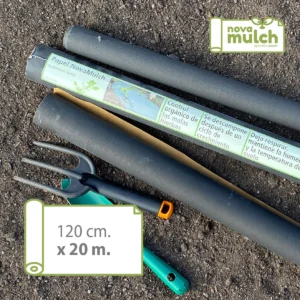 Novamulch paper 120 cm. x 20 m.41,63 € IVA incluido
Novamulch paper 120 cm. x 20 m.41,63 € IVA incluido -
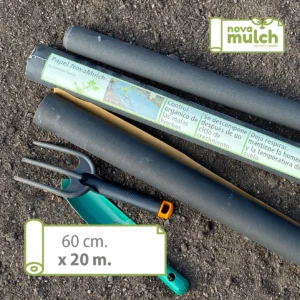 Novamulch paper 60 cm. x 20 m.21,89 € IVA incluido
Novamulch paper 60 cm. x 20 m.21,89 € IVA incluido -
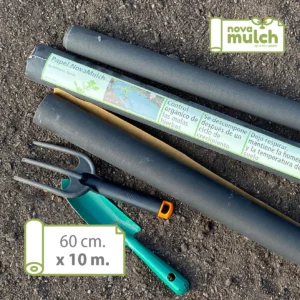 Novamulch paper 60 cm. x 10m.14,85 € IVA incluido
Novamulch paper 60 cm. x 10m.14,85 € IVA incluido -
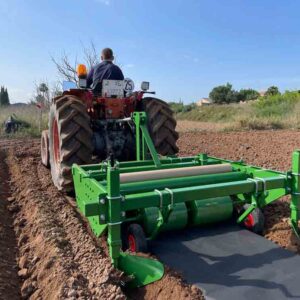 Novamulch agricultural mulching machine
Novamulch agricultural mulching machine
Final considerations.
- We’ve reviewed the benefits and harms of the sedge, Cyperus rotundus, our fierce herbaceous plant. A double-edged sword, a thin red line divides it between benefits and profits, and the harm and damage it causes to our biodiversity and ecosystem.
- It’s essential to understand all the aspects and implications of the disease on our cultivation plans, as controlling the problems caused by the ferocious sedge will be vital to the success and profitability of our agricultural projects.
- As we have analyzed in this space, we believe that the most effective, environmentally friendly, and cost-effective solution for inhibiting the growth and proliferation of sedge is biodegradable paper mulch.
- Paper mulch provides a sure path to achieving crops of optimal quality and productivity, and is our essential support from the beginning to the harvest of our crops.
- Furthermore, by biodegrading, it will allow us to develop our next agricultural plan on healthy, properly fertilized soil, rich in organic matter and essential nutrients, and consistent with the sustainability and continued regeneration of the ecosystem that so desperately needs our assistance.
So, let’s get to work and good luck!

